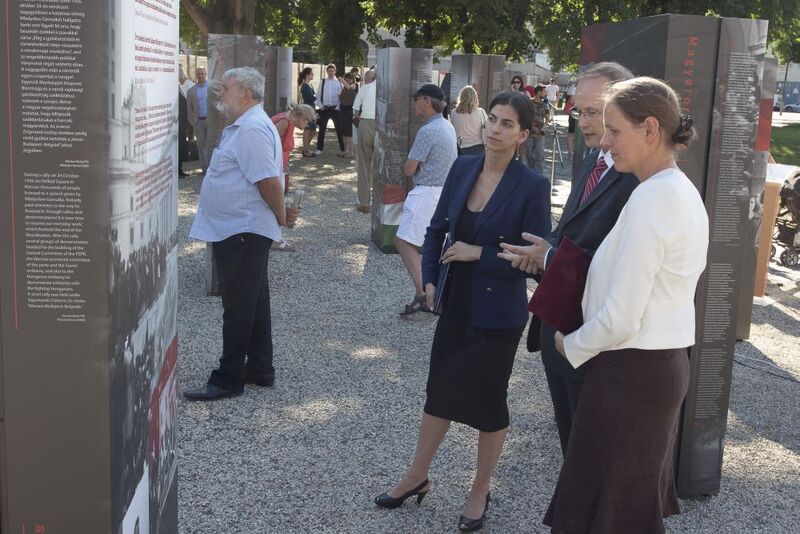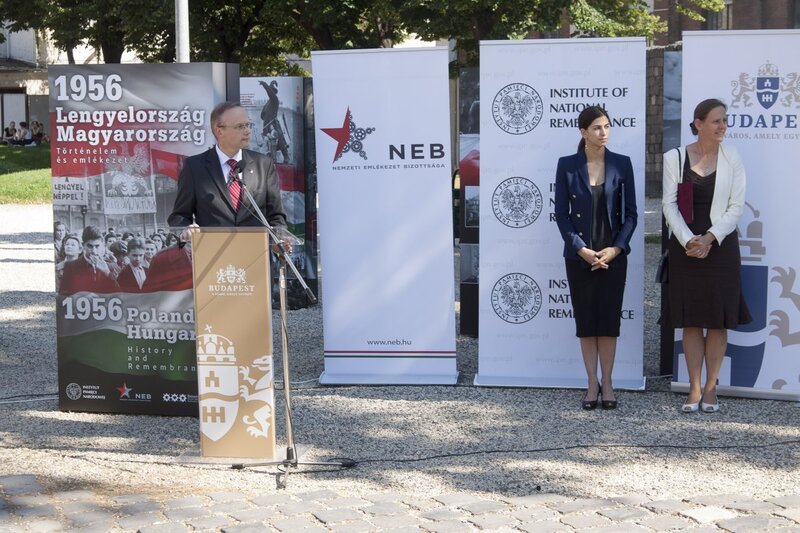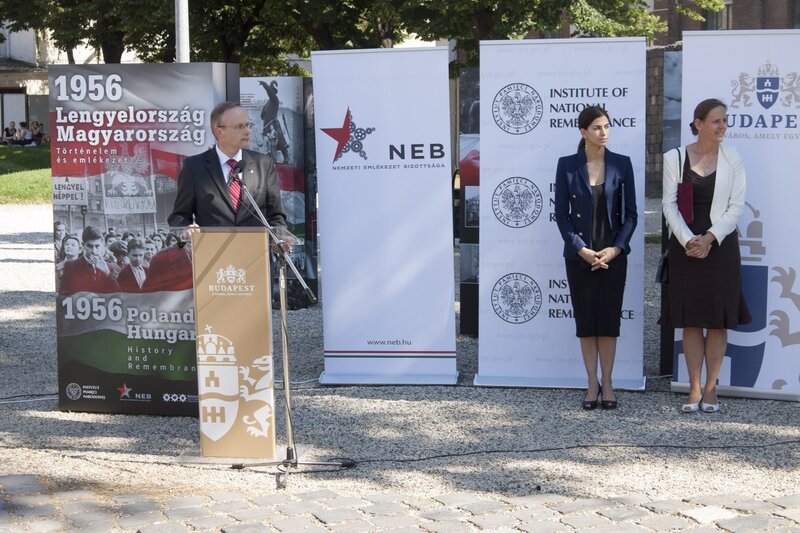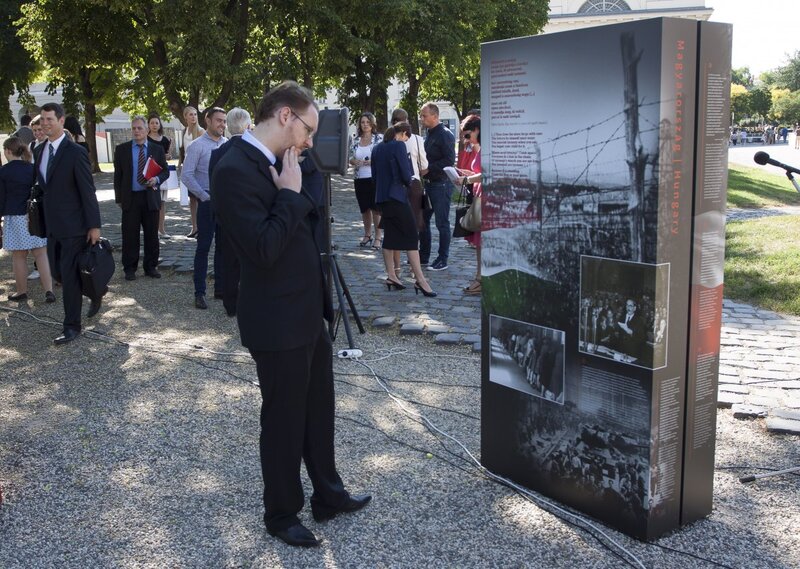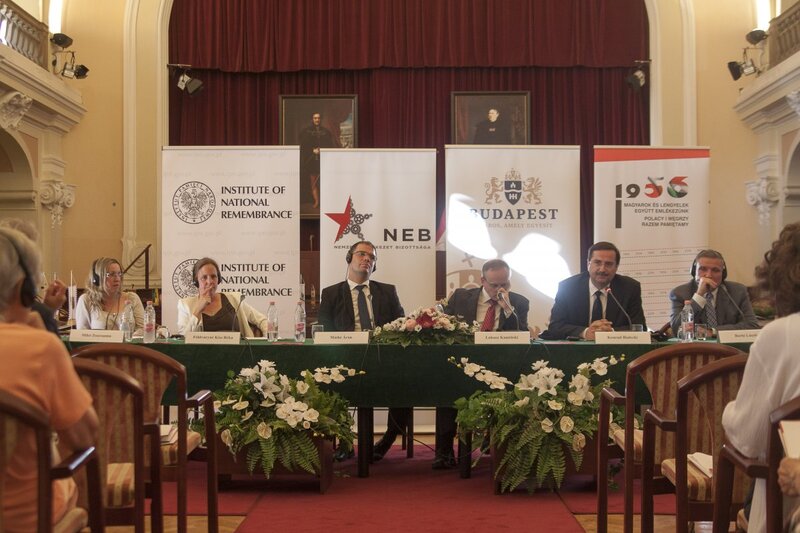On 29 June 2016 at the City Hall Square in Budapest a ceremonial opening of the exhibition „1956: Poland - Hungary. History – Remembrance” was held. It is a joint project of the Institute of National Remembrance, the IPN Hungarian counterpart – the Committee of National Remembrance (Nemzeti Emlékezet Bizottságának - NEB) and the Hungarian Cultural Institute in Warsaw.
The following persons inaugurated the opening of the exhibition in Budapest: Alexandra Szalay Bobrovniczky, Deputy Mayor of Budapest, Dr. Réka Földváryné Kiss, NEB Chair and Dr. Łukasz Kamiński, President of the Institute of National Remembrance .The ceremony was also attended by Ambassador of the Republic of Poland in Hungary Roman Kowalski.
The opening of the exhibition was accompanied by a panel discussion devoted to the events of 1956 in Poland and Hungary, with the participation of Polish and Hungarian historians.
The debate was inaugurated by Gergely Gulyás, Vice-Speaker of the Hungarian Parliament. A welcome letter from the Prime Minister of Hungary Viktor Orbán was also read out.
The following persons participated in the panel discussion: Dr. Konrad Białecki (IPN), Prof. László Borhi (Indiana University), Dr. Łukasz Kamiński, (President of the IPN), Dr. Réka Földváryné Kiss (Chair of the NEB) and Zsuzsanna Mikó (Hungarian National Archive). The discussion was moderated by Áron Máthé (Deputy Chair of the NEB).
Furthermore, during his visit to Budapest, President of Institute of National Remembrance Dr. Lukasz Kaminski together with Deputy Chair of the NEB Aron Máthé laid symbolic bouquets of flowers at the commemorative plaque of Romek Strzałkowski – the youngest victim of the Poznań June 1956 - and Peter Mansfeld – fifteen, who joined the Hungarian National Uprising of 1956 and was executed three years later, becoming the youngest victim of the repression after the suppression of the Hungarian revolution.
***
The exhibition „1956: Poland - Hungary. History – Remembrance” was prepared in parallel in Polish and English (for the purpose of its presentation in Poland) and in Hungarian and English (for the purpose of its presentation in Hungary).
Its Polish official opening took place on 27 June in Poznan in the Castle Garden of Victims of Katyn and Siberia, and a day later, on 28 June 28 in Warsaw, in the courtyard of the Seym.
The exhibition is one of the elements of joint activities of the Institute of National Remembrance, Committee of National Remembrance and Hungarian Cultural Institute in Warsaw, carried out on the occasion of the falling this year 60th anniversary of the events of 1956 in Poland and Hungary. The main message is subordinated to the idea of the struggle for freedom, truth and solidarity between the two nations, independent from the officially emphasized friendship. The aim is to recount the events of 1956 in Poland and Hungary and show the universal desire for freedom of the people living in the Communist system. It is also an opportunity to show the fate of the two nations, that, despite different history during the Second World War, found themselves on the same side of the Iron Curtain, and the fate of people who, despite the difficult situation, fought for freedom and offered support to each other. At the same time the Polish dimension of the 1956 anti-Communist revolt of the inhabitants of Poznań in 1956 has been accentuated. These activities take place under the heading „1956. Poles and Hungarians. Together we remember”.
News
12.07.2016
